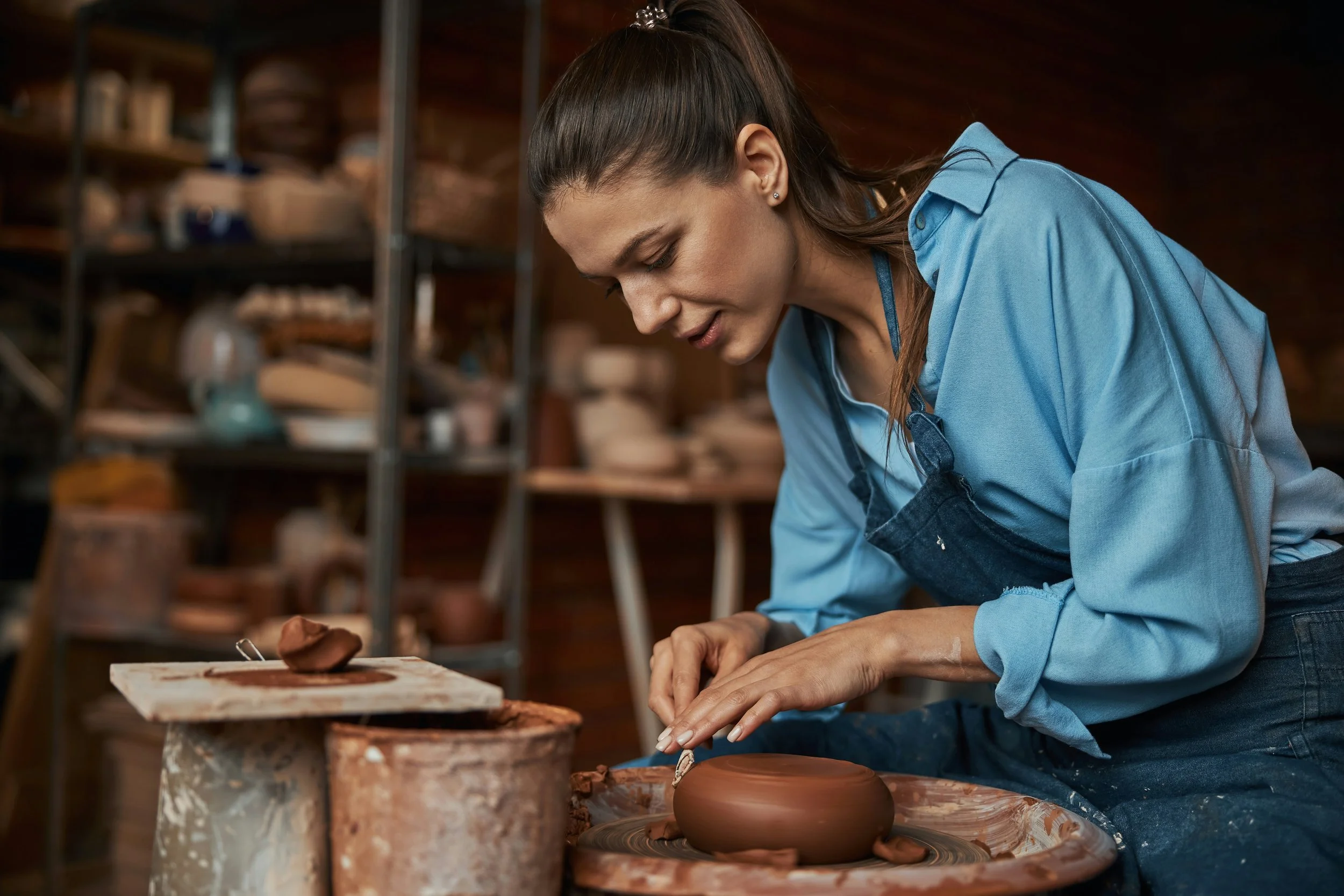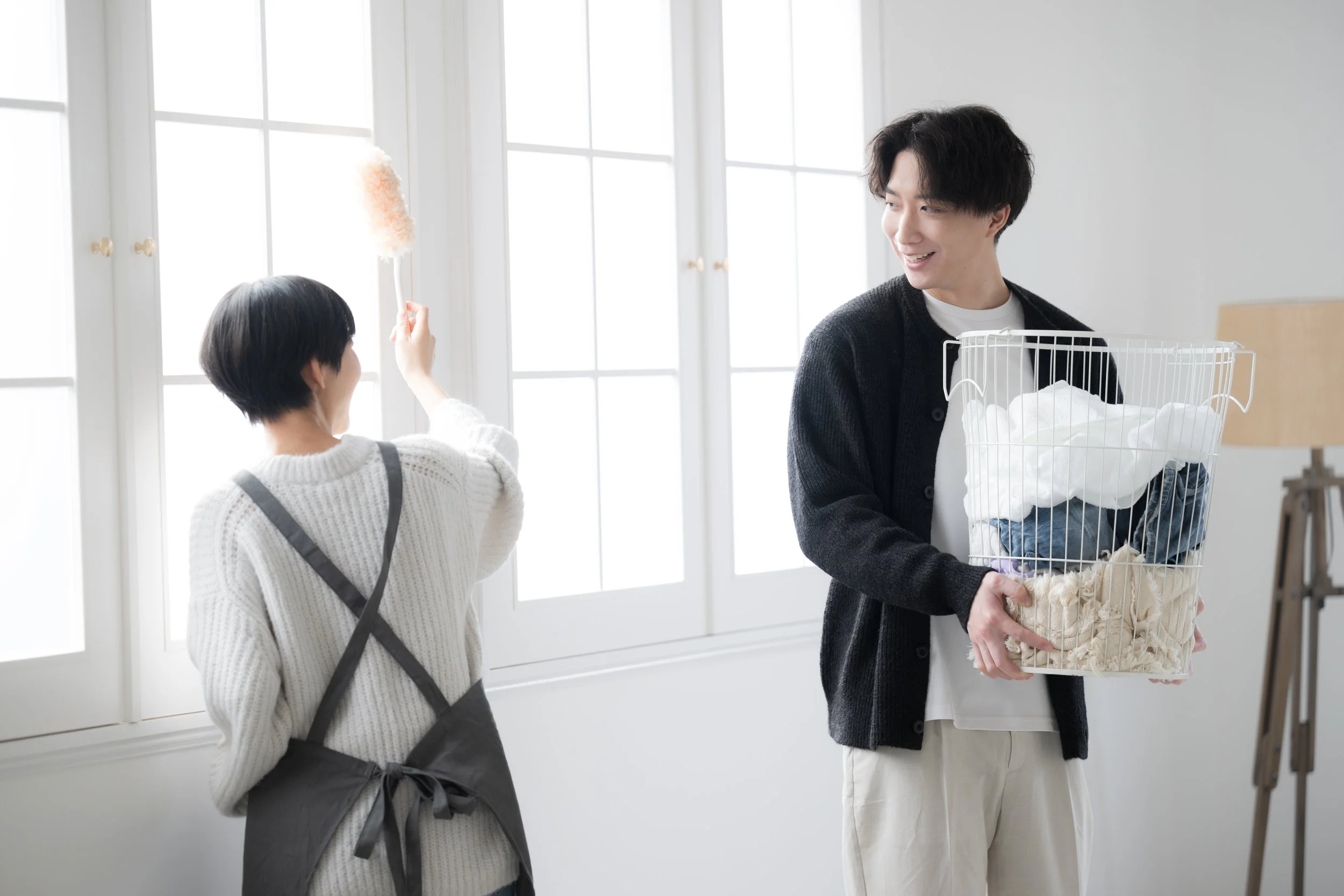THE IDENTIFIER
PEOPLE PLUS
SYNERGISTIC DESIGN
Synergistic Motivational Design
How you relate to others.
Ambition-Driven Relationships
Your relationships align seamlessly with your ambitions, driven by a strong dedication to realizing a significant vision. You carefully surround yourself with people who either contribute directly to your goals or are the very inspiration behind your efforts. Partners in your journey are more than just companions—they are active participants, supporting the sacrifices and hard work required to make your dreams a reality, with mutual support being crucial for the journey.
Enriching Worldview Through Diverse Connections
In cultivating diverse friendships and connections across different industries, you enrich your worldview and gain invaluable insights. Your open-mindedness helps you adapt to shifting situations and challenges. The close bonds you form with colleagues and employees often blur the line between professional and personal relationships, where shared goals and sacrifices foster camaraderie, with loyalty serving as a cornerstone of trust and reliability.
Strategic and Adaptive Relationship Management
A strategic approach underpins your relationships, ensuring each interaction aligns with your vision. Beyond loyalty, you value resilience and adaptability in those around you, recognizing that challenges are inevitable. Your high emotional intelligence allows you to adjust as needed, offering either encouragement or tough love, and you prioritize clear communication to create a shared sense of purpose and ownership, balancing ambition with care to keep goals and people aligned.
You will have friends from all walks of life.
You can be very close to those that you work with and that work for you.
You want someone in your life who will be a partner in the work and who understands the sacrifice that it takes to get things done.
Loyalty is one of the most important elements in your relationships.
You believe that when work pulls you away from close relationships, it's worth it because you're ultimately doing things that will greatly benefit them.
synergistic Motivational Design
Meet the other designs
SYNERGISTIC DESIGN
Meet Your Design
-
Synergistic Designs, grounded in the Order Drive, are masters at weaving people, systems, and ideas into unified, functioning wholes. These individuals are driven by the desire to create efficiency with empathy—where everything and everyone has a place and a purpose. They naturally see patterns, potential, and paths to integration, and thrive in settings where collaboration meets vision.
With strengths in organization, persuasion, and alignment, Synergistic types excel at crafting environments where teams thrive, systems run smoothly, and objectives are achieved with clarity and cohesion.
-
Perception: Partners in Purpose
When two Synergistic Designs encounter each other, there’s often an immediate sense of alignment and mutual understanding. They recognize in one another the shared desire for order, impact, and harmony. There’s a deep respect for the other’s ability to think systemically, communicate clearly, and take responsibility for group outcomes.
This mutual recognition often creates strong partnerships, whether in work, leadership, or collaboration—because both naturally speak the language of coordination, unity, and long-range vision.
Critique: Structure Over Spontaneity
However, this pairing can sometimes overcorrect toward stability. Each may reinforce the other’s tendency to over-plan, over-structure, or over-manage, leading to rigidity or resistance to change. Innovation may take a back seat if both prioritize what’s been proven to work over what might work better.
Synergistics may also compete subtly for leadership or organizational control, especially if roles aren’t clearly defined. Both have strong opinions about how things should be run, which can lead to collisions of vision if not addressed with openness and humility.
They may also miss out on the spark of spontaneity that comes from engaging more intuitive, emotional, or experimental types. Without inviting some unpredictability, this pairing can begin to feel mechanical or overly polished, losing touch with the deeper emotional resonance that makes systems feel alive.
Appreciation: Shared Rhythm and Mastery
Yet, the synergy is undeniable. Synergistic pairs thrive on shared purpose, the thrill of bringing order to complexity, and the efficiency of mutual understanding. They value each other’s dedication to getting it right—not just for themselves, but for the greater good of the team, organization, or community.
They speak the same dialect of structure and alignment, and can often anticipate each other’s needs and actions with little discussion. Together, they create a kind of orchestrated flow, where vision becomes action, and chaos finds clarity.
Intuitive Design
-
People with this design focus on observing and understanding the deeper motivations behind actions and situations, aiming to illuminate the truth and facilitate change. They are analytical, introspective, and perceptive, constantly seeking clarity and insight. Their drive is rooted in the desire to reveal and comprehend the essence of people, places, and things. Intuitive Designs are often catalysts for transformation, guiding others through their unique ability to see beneath the surface and recognize what needs to be addressed in order to grow.
-
Perception: Harmonizers of Complexity
Intuitive Designs often see Synergistic types as skilled harmonizers who excel at bringing clarity, order, and cohesion to otherwise complex human dynamics. They admire how Synergistics don’t just manage systems—they shape relationships, ensuring that people and processes work together in unity. This integrative approach appeals to the Intuitive’s deep appreciation for underlying truths and hidden interconnections.
Intuitives respect the Synergistic’s ability to take diverse individuals, ideas, and needs, and synthesize them into a functional whole. Where Intuitives see the essence of things, Synergistics design the frameworks to support and express that essence in practical, often elegant, ways.
Critique: Harmony Over Depth
Despite this appreciation, Intuitive Designs may feel that Synergistics overvalue peace, structure, or agreement—at times to the detriment of deeper exploration or necessary confrontation. From the Intuitive’s perspective, real understanding often requires sitting in discomfort, wrestling with contradictions, and exploring what’s not immediately obvious or agreeable.
Synergistics may be perceived as avoiding conflict or smoothing over deeper issues in order to preserve group cohesion. To the truth-seeking Intuitive, this can feel like a compromise of authenticity or an unwillingness to dive into the deeper, messier waters of growth.
They may wish Synergistics would allow for more disruption and discovery, trusting that real harmony is not just found in alignment—but sometimes in illuminating what’s been left in the dark.
Appreciation: Orchestrators of Unity and Insight
That said, Intuitive Designs deeply value the Synergistic Design’s gift for creating spaces where collaboration can thrive. They recognize that without this kind of thoughtful structure and emotional intelligence, many groups would struggle to function, let alone flourish.
They admire how Synergistics turn ideals into actionable strategies, how they gather people not just for movement, but for meaningful progress. Synergistics help Intuitives ground their insights in relationships, systems, and decisions—providing a platform where truth can be received, not just revealed.
-
Perception: Quiet Truth-Seers with Depth
To Synergistic Designs, Intuitive individuals often come across as deeply thoughtful, quietly intense, and powerfully perceptive. They recognize the Intuitive’s ability to sense what others miss, seeing the emotional undercurrents, hidden motivations, or subtle misalignments in a group or system.
Synergistics value the way Intuitives can cut through appearances, offering clarity and reflection that can be transformative for both individuals and organizations. They see Intuitives as keepers of inner wisdom, able to hold space for complexity and catalyze growth from within.
Critique: Overly Inward or Unstructured
However, Synergistic Designs may sometimes struggle with the Intuitive’s less linear, less structured approach. Where Synergistics value clear plans, defined roles, and tangible coordination, Intuitives often operate through insight, observation, and internal processes that don’t always align with group timelines or systems.
They may find Intuitives too quiet, too uncertain, or too absorbed in reflection, especially when a decision needs to be made or progress measured. Synergistics may wish for more clarity, participation, or outward expression, especially in collaborative settings.
Appreciation: Anchors of Insight and Integrity
Nonetheless, Synergistic Designs have a deep appreciation for the Intuitive’s commitment to truth and authenticity. They value how Intuitives help them see below the surface, bringing to light dynamics that could otherwise go unnoticed but ultimately shape the success or failure of a system.
Synergistics know that without the Intuitive’s depth of perception and capacity for introspection, the systems they build could lack soul—or overlook the subtle misalignments that compromise harmony in the long run.
-
When Intuitive and Synergistic Designs come together, they create a powerful partnership of structure and sensitivity, clarity and cohesion. Intuitives uncover hidden truths, and Synergistics arrange them into frameworks that elevate both people and processes. One brings insight, the other brings implementation.
Together, they remind us that the best systems are those that honor both truth and unity, where what is felt is not buried—but brought into the light and woven into the whole.
Enterprising Design
-
People with this design are focused on achieving goals through strategic planning, bold action, and continuous improvement. They are naturally competitive, ambitious, and enterprising, often driven by the thrill of setting and surpassing milestones. Their energy is directed toward advancement—finding the next opportunity, solving the next challenge, and always pushing toward a greater result.
Enterprising Designs thrive in environments that demand focus, decisiveness, and momentum, and they are motivated by measurable progress, personal mastery, and the pursuit of excellence.
-
Perception: Strategic Organizers and Collaborative Leaders
Enterprising Designs often see Synergistic individuals as visionary coordinators—people who know how to assemble teams, streamline efforts, and craft efficient systems that turn strategy into results. They admire the Synergistic’s ability to think systemically, aligning people and resources toward common objectives without micromanaging every detail.
To the Enterprising Design, Synergistics bring structure to ambition—not slowing it down, but giving it shape and focus. They view Synergistics as key allies in scaling success, often providing the organizational backbone needed to turn a great idea into a winning execution.
Critique: Process Over Progress
That said, Enterprising individuals may sometimes become frustrated with the Synergistic tendency to over-consult, over-plan, or seek too much group alignment before moving forward. From their perspective, momentum matters, and excessive focus on harmony or process can delay critical action.
They might perceive Synergistics as hesitant to disrupt the status quo, or as too diplomatic when a stronger, more assertive move is needed. While Enterprisings thrive on boldness and urgency, Synergistics may feel overly cautious or even passive when decisive leadership is required.
Enterprisings may wish for a faster pace, more risk-taking, and a bolder stance in the face of challenges.
Appreciation: Builders of Sustainable Success
Despite the differences in approach, Enterprising Designs deeply appreciate the stability and follow-through that Synergistic Designs bring to the table. They recognize that while Enterprisings can start the race with power, Synergistics ensure the finish line is crossed—with everyone intact and aligned.
They admire how Synergistics see the human element in execution, making sure that the plan doesn’t just succeed technically, but also supports the team, protects the culture, and leads to sustainable outcomes. In this way, Synergistics extend the lifespan and impact of Enterprising energy, ensuring that progress is meaningful, not just fast.
-
Perception: Dynamic Drivers of Progress
To Synergistic Designs, Enterprising individuals represent high-energy initiators who bring clarity, vision, and bold momentum to any group or project. They are seen as natural motivators and achievers, capable of mobilizing teams and pushing through resistance with confidence.
Synergistics appreciate how Enterprisings get things done, especially when a situation has grown stagnant or when clear, goal-oriented direction is needed. They view them as powerful agents of advancement—willing to challenge norms, embrace competition, and raise the standard.
Critique: Impatient or Overly Outcome-Driven
However, Synergistic Designs may sometimes feel that Enterprisings rush through planning, overlook interpersonal dynamics, or become too fixated on results at the expense of process and people. They may struggle with the Enterprising tendency to push past collaboration in favor of speed, which can feel disruptive or inconsiderate to a harmony-focused Synergist.
They may wish for more pausing, listening, and inclusion in how goals are reached—especially when group trust and long-term cohesion are at stake.
Appreciation: Catalysts of Ambition and Excellence
Still, Synergistic Designs greatly value the fire and direction Enterprisings bring. They see them as vision-charged partners, capable of igniting growth and sparking meaningful results. While Synergistics may shape the path, they look to Enterprisings to break the trail—with courage, focus, and an unwavering eye on the goal.
Together, they can lead teams that are both efficient and inspired, combining heart-led structure with goal-driven energy.
-
When Enterprising and Synergistic Designs collaborate, they create a powerful balance of ambition and orchestration. Enterprisings bring the push, the plan, and the performance. Synergistics bring the people, the process, and the purpose. One moves fast; the other moves with clarity.
Together, they remind us that true achievement isn’t just about getting there—it’s about how well the system, the people, and the mission hold together as you arrive.
Industrious design
-
People with this design emphasize the importance of providing consistent and reliable support to ensure the functionality and well-being of systems and individuals. They are practical, dependable, and detail-oriented, thriving on routine and stability. Their motivation comes from being the backbone that keeps everything operational and alive—whether through hands-on service, structured care, or the quiet strength of daily follow-through.
Industrious Designs are deeply committed to responsibility, sustainability, and meaningful contribution, believing that the small things done faithfully over time make the biggest impact.
-
Perception: Organized Leaders of Structure and Flow
Industrious Designs often see Synergistic individuals as organized, efficient, and skilled at managing complexity. They appreciate the way Synergistics handle group coordination and larger systems—especially when it comes to ensuring that everyone knows their role and tasks get done properly.
To an Industrious person, Synergistics provide the blueprints that keep projects, processes, and teams aligned. There is admiration for their ability to see the big picture and break it down into a sequence that makes sense. This clarity gives Industrious types the opportunity to do what they do best: follow through with precision and care.
Critique: Overthinking the Process
Despite their alignment, Industrious individuals may at times feel that Synergistics are too focused on structure or people dynamics, potentially overcomplicating what could be handled more directly. Where Industrious Designs thrive on clear tasks and steady execution, Synergistics may bring in too many moving parts, meetings, or revisions—which can delay progress or blur the focus.
They may perceive Synergistics as being too invested in perfecting the plan or making sure everyone is emotionally aligned before taking action. From the Industrious perspective, simple execution often trumps ideal coordination.
There may be a desire for Synergistics to be more decisive and practically grounded, with less emphasis on vision and more on clear, tangible tasks.
Appreciation: Coordinators of Purposeful Progress
Still, Industrious Designs hold deep appreciation for the Synergistic’s ability to create systems where everyone’s strengths are utilized and supported. They value how Synergistics bring structure, accountability, and harmony, helping to prevent burnout and misalignment before they start.
Synergistics are seen as reliable allies—those who understand the importance of steady function and clear responsibilities, even as they manage bigger-picture objectives. Industrious individuals admire how Synergistics ensure that all parts of a project or team work together seamlessly, which ultimately makes their own work more meaningful and effective.
-
Perception: Reliable Executors and Guardians of Stability
To Synergistic Designs, Industrious individuals are the quiet force that makes things happen. They are seen as loyal, thorough, and unwavering, providing the consistency that Synergistics need in order to implement their broader strategies. There’s a deep respect for the Industrious’s follow-through, attention to detail, and unwavering commitment to doing things right.
Synergistics know that without the Industrious partner, their well-crafted systems would lack the daily maintenance and energy required to keep them alive.
Critique: Too Routine-Oriented or Resistant to Change
At times, Synergistics may find Industrious Designs to be too rooted in routine or resistant to change. Their focus on stability and practicality may come across as rigid or overly cautious, especially when Synergistics are trying to introduce new initiatives or push the group forward.
They may wish for the Industrious to embrace more flexibility or creative thinking, rather than defaulting to what has worked before. For Synergistics, this can feel like an obstacle to innovation or adaptability.
Appreciation: Foundations That Make Vision Possible
Still, Synergistic Designs deeply appreciate how Industrious individuals bring structure to the day-to-day. Their grounded nature, attention to detail, and sense of duty provide a solid operational foundation—without which strategic planning would fall flat.
Synergistics rely on Industrious Designs to bring structure to the dream, to maintain the system while it evolves, and to remind the whole team that consistency is often the secret to success.
-
Together, the Industrious and Synergistic Designs form a relationship of steady movement and purposeful structure. Industrious types bring the muscle to the machine; Synergistics design the engine. One works from the inside out, the other from the outside in.
They remind us that big visions require small, consistent actions, and that the best systems are sustained not by brilliance alone, but by the faithful rhythm of support and care.
Economical Design
-
People with this design excel at managing, accumulating, and distributing resources to meet both present and future needs. They are often meticulous, conservative, and thoughtful decision-makers, grounded in practicality, efficiency, and financial foresight. Their motivation comes from the desire to ensure that nothing essential is lacking—that the right things are in place at the right time, without waste or excess.
Economical Designs are natural planners and protectors, using discernment and resource wisdom to preserve value, prevent loss, and promote long-term provision for themselves and those they care for.
-
Perception: Strategic Stewards of Efficiency
Economical Designs tend to see Synergistic individuals as organized, capable managers of systems—those who know how to maximize potential by aligning people, resources, and goals into a cohesive, sustainable structure. They appreciate the Synergistic’s knack for identifying inefficiencies and building processes that enhance productivity and minimize waste.
To the Economical mind, Synergistics are valuable partners in long-term planning and resource stewardship, ensuring that every piece in the system is accounted for and used wisely. There’s a shared respect for functionality, intentionality, and thoughtful execution.
Critique: Vision at the Expense of Practicality
However, Economical individuals may sometimes feel that Synergistics become too absorbed in the bigger picture, focusing on strategic alignment or ideal structures while overlooking real-time constraints or practical limits. From their perspective, it’s not enough for a system to be visionary—it must also be cost-effective, timely, and grounded in what’s currently available.
They may perceive Synergistics as too idealistic or slow to adapt when resources are tight or conditions change, and might wish for more attention to budgeting, prioritization, or streamlined simplicity.
In short, Economicals may see Synergistics as well-intentioned but occasionally resource-indulgent, needing to temper their broad vision with tighter controls and present-moment awareness.
Appreciation: Designers of Sustainable Systems
Despite any critiques, Economical Designs hold a deep appreciation for the Synergistic’s ability to design systems that are both scalable and sustainable. They recognize that while Economicals specialize in resource conservation, Synergistics build the frameworks that allow resources to flow efficiently and serve their purpose in context.
They value the Synergistic’s capacity to unify planning, people, and process, turning good intentions into systems that actually function well in real-world conditions—especially when both designs are aligned around shared values of efficiency, accountability, and longevity.
-
Perception: Masters of Stewardship and Discernment
To Synergistic Designs, Economical individuals are the wise conservers and operational anchors—the ones who ensure that nothing is wasted, overlooked, or taken for granted. They are seen as trustworthy, consistent, and essential to keeping things grounded. Synergistics appreciate how Economicals ask the hard practical questions: “What do we have?” “What do we need?” “What will this cost?”
They see them as protectors of sustainability, making sure that ideas are not only beautiful, but viable and supported.
Critique: Risk-Averse or Too Restrictive
However, Synergistics may sometimes feel that Economicals are overly cautious or resistant to change, often viewing new ideas as financial risks or unnecessary experiments. When Synergistics are trying to move a vision forward or implement a more ambitious system, the Economical’s instinct to “protect the resources” can feel like a barrier to progress.
They may wish for more openness, flexibility, or strategic investment thinking, especially when opportunities arise that require trust in future payoff rather than immediate return.
Appreciation: Guardians of Function and Integrity
Still, Synergistics deeply value how Economical Designs keep everything grounded, accountable, and running smoothly behind the scenes. They appreciate the clarity and realism that Economicals bring to planning conversations, and how they often prevent a good system from falling apart due to overreach or poor allocation.
In their eyes, Economicals are unsung heroes of sustainability, ensuring that the structures they build are resourced, protected, and preserved.
-
The relationship between Economical and Synergistic Designs is one of structure and stewardship, vision and viability. Economicals bring the careful discernment needed to protect what matters. Synergistics bring the strategic coordination needed to activate what’s possible.
Together, they remind us that well-functioning systems require both thoughtful design and practical sustainability, and that lasting success is found not just in what’s built—but in how wisely it’s maintained.
Conceptual Design
-
People with this design are centered around the pursuit of new ideas, principles, and methodologies through exploration and learning. They are curious, patient, and logical, enjoying the process of uncovering how things workand building systems of thought that expand understanding. Conceptual Designs thrive on discovery, intellectual engagement, and innovation. Their motivation is driven by the desire to expand knowledge, test theories, and develop new frameworks that can lead to growth and advancement in all areas of life.
-
Perception: System Thinkers with Integrative Insight
Conceptual Designs often see Synergistic types as big-picture organizers—people who are naturally inclined to take a collection of ideas, people, or functions and orchestrate them into a working whole. They respect the Synergistic’s ability to see connections between disparate elements and to synthesize complexity into clarity.
To Conceptuals, Synergistics are the ones who take a well-formed idea and ask, “How does this fit into the bigger picture?”—a question that Conceptuals themselves often forget to ask. They admire how Synergistics create frameworks where theory meets application, ensuring that even abstract concepts have practical relevance.
Critique: Structure Over Exploration
Despite this admiration, Conceptual Designs may find themselves feeling constrained or intellectually stifled by the Synergistic’s strong focus on structure, integration, and cohesion. To the Conceptual mind, ideas must be free to evolve, and exploration often requires freedom from constraints.
They may view Synergistics as overly focused on implementation, prematurely closing off the creative process in favor of refining or applying what has already been discovered. There’s sometimes a frustration that Synergistics may value order over originality, or may hesitate to engage with unconventional or untested concepts.
Conceptuals may wish Synergistics would embrace uncertainty and abstract thought more fully, trusting that not every idea has to fit into a system right away.
Appreciation: Translators of Innovation into Reality
Still, Conceptual Designs deeply appreciate how Synergistic individuals bridge the gap between innovation and execution. They recognize that Synergistics take the “what ifs” of discovery and transform them into "here’s how it can work". This grounding influence helps Conceptuals bring their insights into the world, giving them form, function, and continuity.
Conceptuals admire the Synergistic Design’s ability to support intellectual exploration with structure, ensuring that ideas not only take shape but also create sustainable impact. They value the way Synergistics help align complex concepts into real systems where they can be tested, refined, and used.
-
Perception: Explorers of Possibility
To Synergistic Designs, Conceptual types appear as deep thinkers, quiet pioneers, and untapped reservoirs of potential. They see them as those who love to probe beneath the surface, challenge assumptions, and stretch the boundaries of what’s known. There is a genuine appreciation for the Conceptual Design’s patience, curiosity, and disciplined logic.
Synergistics admire their devotion to clarity and accuracy, and they often rely on Conceptuals to provide the foundational truths and guiding principles that their systems are built upon.
Critique: Unanchored or Overly Theoretical
That said, Synergistic Designs may also find Conceptuals to be slow-moving, non-committal, or overly focused on ideas that haven’t yet been tested. While Synergistics value structure and visible outcomes, Conceptuals may seem to linger in philosophical territory without concern for implementation.
They may wish for Conceptuals to bring their insights into action sooner, and to contribute more visibly to the collaborative process, rather than staying in the background with their thoughts.
Appreciation: Wellsprings of Innovation
Still, Synergistic Designs appreciate the intellectual depth and creative brilliance of the Conceptual mind. They see them as generators of vision, offering perspectives that challenge the status quo and seed new possibilities. When paired well, Synergistics help turn Conceptual insights into structures that serve people and achieve lasting results.
Together, they can design systems that are not only functional, but also forward-thinking and adaptive—blending wisdom with action.
-
The relationship between Conceptual and Synergistic Designs is a partnership of structure and exploration, logic and leadership. One seeks to discover new truths; the other seeks to organize those truths into something that serves the greater whole.
Together, they remind us that innovation is not just about invention—it’s about integration, and that systems thrive best when they are built on curiosity and fueled by clarity.
Experiential Design
-
People with this design seek to cultivate a life filled with joy, satisfaction, and meaningful experiences. They are free-spirited, emotionally expressive, and deeply creative, driven by a desire to spread happiness, peace, and authentic connection. Their fulfillment comes from the ability to experience beauty, express themselves, and help others discover moments of joy and purpose.
Experiential Designs are guided by what feels meaningful in the moment, and they bring a sense of vitality and playfulness into every space they enter. Their motivation is rooted in living fully, loving freely, and finding fulfillment in both small pleasures and big adventures.
-
Perception: Coordinators of Enjoyable Experiences
Experiential Designs often see Synergistic individuals as skilled organizers who elevate shared experiences through thoughtful planning and intentional structure. They admire how Synergistics have the ability to make things work—beautifully and efficiently—so that others can relax and enjoy the moment.
To the Experiential mind, Synergistics are the ones who make joy more accessible, not by controlling it, but by creating an environment where it can flourish. Whether coordinating a group outing, hosting a meaningful event, or building a peaceful home, Synergistics bring a sense of order that enhances the overall emotional and social experience.
Critique: Too Structured, Not Enough Flow
Despite this appreciation, Experiential Designs may sometimes find Synergistics to be too focused on systems, rules, or routines, especially when flexibility and freedom are needed. From the Experiential point of view, too much emphasis on coordination or consensus can dampen the mood or take the spontaneity out of what could’ve been a magical moment.
They may feel that Synergistics are overly concerned with planning, sometimes missing the chance to let things unfold naturally or follow emotional energy in the moment. While structure can be a gift, Experientials may wish for more looseness, less formality, and greater trust in the moment.
Appreciation: Architects of Shared Fulfillment
Still, Experiential Designs genuinely admire the Synergistic’s talent for bringing people together with purpose. They value the way Synergistics coordinate efforts without overshadowing personalities, making sure that everyone feels seen, heard, and part of something greater.
They appreciate how Synergistics provide supportive scaffolding that lets joy shine more brightly—helping the Experiential express their creativity, celebrate beauty, and connect deeply with others in environments that feel safe, harmonious, and purposeful.
Synergistics, in their eyes, are not only planners—they are curators of meaningful connection.
-
Perception: Spark-Carriers of Joy and Creativity
To Synergistic Designs, Experiential individuals appear as inspirational, heartfelt, and emotionally magnetic. They see them as people who bring life into systems, energy into spaces, and meaning into moments. Experientials remind Synergistics that systems are made for people—not the other way around.
Synergistics admire how Experientials prioritize beauty, creativity, and human connection, and how they often serve as the emotional center of group life, fostering laughter, compassion, and celebration.
Critique: Unpredictable or Unstructured
However, Synergistics may sometimes find Experiential Designs to be too unstructured, too emotionally driven, or too indifferent to plans. While Synergistics aim to ensure everything works together, Experientials can appear to go off-script, follow inspiration over instruction, or prioritize personal expression over group expectations.
They may wish for more reliability or alignment with group goals, especially when things need to stay on track or meet shared deadlines.
Appreciation: Catalysts for Joy and Meaning
Despite occasional tension, Synergistics deeply value Experiential Designs as heart-centered catalysts who remind everyone why we’re doing what we’re doing. They bring meaning to structure, joy to progress, and color to what might otherwise be routine.
Synergistics recognize that without Experientials, systems risk becoming sterile or impersonal. With them, those same systems become spaces where real life happens—beautifully, unpredictably, and joyfully.
I
-
When Experiential and Synergistic Designs work together, they bring a rare balance of heart and harmony, creativity and coordination. Experientials help Synergistics reconnect with the joy in their purpose. Synergistics help Experientials ground their joy in structure that multiplies it.
Together, they remind us that the most meaningful experiences are often both designed and discovered—and that true fulfillment often emerges when beauty is embraced within thoughtful boundaries.
How you see yourself.
If you have a synergistic design driven by a strong order focus, you likely see others through the lens of their ability to contribute to harmony, collaboration, and effective systems. Here’s how you might typically perceive others:
-
You view yourself as highly organized, excelling at creating structure and order. You take pride in your ability to develop systems and processes that enhance efficiency and coherence.
-
You see yourself as a visionary thinker, capable of seeing the big picture and planning strategically. You consider yourself adept at setting long-term goals and aligning various components to achieve a unified vision.
-
You perceive yourself as collaborative and inclusive, valuing teamwork and cooperation. You believe in bringing people together and fostering an environment where diverse talents and perspectives can contribute to a common goal.
-
You tend to see yourself as a harmonizer, skilled at creating balance and harmony within groups or systems. You focus on ensuring that all parts work together seamlessly, avoiding conflict and promoting a sense of unity.
-
You pride yourself on your ability to streamline processes and improve productivity. You often see yourself as an efficiency expert, capable of optimizing workflows and resources.
-
You consider yourself detail-oriented, paying close attention to the finer points that ensure everything runs smoothly. You value thoroughness and precision in your planning and execution.
-
You view yourself as responsible and dependable, often taking on leadership or coordinating roles. You believe in the importance of accountability and see yourself as reliable in ensuring that tasks are completed effectively.
-
You often see yourself as charismatic and persuasive, able to inspire and motivate others. You’re confident in your communication skills and believe in your ability to guide and influence people toward common objectives.
-
While you value structure, you also see yourself as adaptive and capable of adjusting plans when necessary. You recognize the importance of flexibility in maintaining harmony and efficiency.e
Overall, you see others in terms of their ability to contribute to a well-ordered, collaborative, and efficient environment. You value those who are organized, cooperative, and strategic, often gravitating toward individuals who can help create and maintain harmony and productivity within groups or systems.
How you see others.
If you have a synergistic design driven by a strong order focus, you likely see others through the lens of their ability to contribute to harmony, collaboration, and effective systems. Here’s how you might typically perceive others:
-
You tend to appreciate people who are organized and systematic in their approach. You value those who can create and maintain order, contributing to a well-structured environment.
-
You admire individuals who are collaborative and work well in teams. You see value in people who can bring diverse talents and perspectives together, fostering cooperation and unity within groups.
-
You respect others who can think strategically and see the big picture. You appreciate those who are capable of planning for the long term and aligning their efforts with broader goals.
-
You’re drawn to people who promote balance and harmony within groups or systems. You value individuals who can mediate conflicts, create unity, and ensure that everyone is working together smoothly.
-
You tend to see value in those who are efficient and productive. You admire individuals who can streamline processes, optimize resources, and contribute to a more effective workflow.
-
You appreciate others who are detail-oriented and thorough in their work. You respect people who ensure that all aspects of a plan or project are well-executed and precise.
-
You respect those who are responsible and dependable, particularly when it comes to leadership or coordinating roles. You value people who can be counted on to follow through on their commitments and ensure that tasks are completed effectively.
-
You see value in individuals who are adaptive and flexible, especially when circumstances require adjustments. You admire those who can maintain harmony and efficiency, even in changing situations.
-
You tend to appreciate people who are charismatic and persuasive, capable of inspiring and motivating others. You value those who can effectively communicate and guide a group toward common objectives.
Overall, you see others in terms of their ability to contribute to a well-ordered, collaborative, and efficient environment. You value those who are organized, cooperative, and strategic, often gravitating toward individuals who can help create and maintain harmony and productivity within groups or systems.
How others see you.
Others generally see you as a highly capable organizer and an effective collaborator who brings structure and harmony to any situation. Your ability to create order and foster teamwork is often recognized and appreciated by those around you. Whether in personal or professional settings, people tend to rely on your skills to bring coherence and direction, making you a key player in achieving collective goals.
-
People often view you as highly organized and systematic. They appreciate your ability to create order and structure, seeing you as a reliable person who can bring coherence to chaotic situations.
-
You’re frequently seen as a visionary thinker who can conceptualize the big picture and develop comprehensive plans. People admire your strategic thinking and ability to foresee long-term outcomes, making you valued for your planning and foresight.
-
Others perceive you as team-oriented and inclusive. You’re often recognized for your ability to foster collaboration and encourage diverse contributions, making you effective at building strong, cohesive teams.
-
You’re seen as a harmonizer who prioritizes creating a balanced and harmonious environment. Others often view you as a mediator who can resolve conflicts and maintain group unity, valuing your efforts to keep interpersonal relationships smooth.
-
People appreciate the efficiency and productivity you bring to projects and organizations. You’re respected for your ability to streamline processes, optimize resources, and ensure that objectives are met in a timely manner.
-
You’re often regarded as detail-oriented and thorough. Others value your meticulous attention to detail and your ability to ensure that all aspects of a project are well-managed.
-
You’re seen as dependable and responsible, often entrusted with leadership or coordinating roles. Others rely on you to ensure that plans are followed through and tasks are completed effectively.
-
You’re frequently perceived as charismatic and persuasive, able to inspire and motivate others. People admire your communication skills and your ability to galvanize people toward common goals.
-
While you’re known for your structured approach, you’re also seen as flexible and adaptive. Others appreciate your ability to adjust plans and strategies in response to changing circumstances, showing a willingness to accommodate new ideas and solutions.
-
You’re often viewed as fair and balanced, striving to ensure that everyone’s voice is heard and that resources are distributed equitably. This fairness makes you well-liked and trusted in group settings.
In summary, others see you as highly organized, strategic, and efficient, excelling at fostering collaboration and maintaining harmony. You’re admired for your ability to balance structure with flexibility and are often relied upon to bring stability and cohesion to teams and projects. However, your emphasis on order and harmony may sometimes lead others to perceive you as overly concerned with maintaining balance, potentially at the expense of innovation or bold decision-making.
synergistic Motivational Design
How you interact with others.
For those with a Synergistic motivational design rooted in Order, their approach to relationships, communication, trust, and conflict is guided by their focus on creating harmony, structure, and effective systems. Here’s how someone with a Synergistic-Order design might respond to the given questions:
What is your personality?
Your personality is organized, systematic, and collaborative. You thrive on bringing order to chaos and enjoy creating systems that make things work smoothly and efficiently. You value harmony and believe that everything functions best when all parts are working together in sync. You’re also a natural planner, always looking ahead to ensure that things are running as they should.
How do you think people see your personality?
People likely see you as reliable, methodical, and a strong team player. They might describe you as someone who is good at organizing and coordinating efforts, ensuring that everyone is working together effectively. Some may see you as a bit meticulous or controlling, but those who know you well appreciate your ability to create order and foster collaboration.
-
I communicate clearly and with purpose, often focusing on ensuring that everyone understands their roles and responsibilities. My communication style is detailed and structured, and I’m careful to ensure that all aspects of a plan are discussed and understood. I listen attentively to ensure that everyone’s input is considered and to identify any gaps in the system that need addressing.
-
Listening Style: I listen with the intent to understand how each part of a project or relationship fits together. I’m focused on ensuring that everyone is aligned and that all contributions are coordinated effectively.
-
I communicate to organize, coordinate, and ensure that everything is functioning according to plan. I’m motivated to communicate when I see a need to clarify roles, address inefficiencies, or bring people together to work toward a common goal. My communication is usually proactive and aimed at maintaining order and preventing misunderstandings.
-
I connect with others through collaboration and by helping to create a sense of unity and shared purpose. I build relationships by working together on projects, organizing efforts, and ensuring that everyone’s contributions are valued and integrated into the larger system. I value connections where there is mutual respect for organization and a shared commitment to working together harmoniously.
-
I decide who to trust based on their reliability, consistency, and ability to work well within a system. Trust is built through demonstrated competence and a commitment to maintaining order and harmony. I trust those who show that they can collaborate effectively and who respect the need for structure and organization.
-
It hurts me when my efforts to create harmony and order are disregarded or when others fail to appreciate the importance of structure. I also feel hurt when there is unnecessary conflict or when people act in ways that disrupt the cohesion of the group. Being blamed for issues that arise from a lack of organization or teamwork is also painful for me.
-
When I’m hurt, I may initially withdraw to reassess the situation and understand what went wrong. I tend to react by focusing on how to restore order and prevent the situation from happening again. I might also become more protective of the systems I’ve put in place, ensuring that they are reinforced to avoid future disruptions.
-
When I’m wrong, I apologize by acknowledging my mistake and explaining how I plan to correct it. I believe in taking responsibility for my role in any disorder that was caused and in making sure that it doesn’t happen again. My apologies often include a commitment to improving the system or process that was affected.
-
A good apology is one that acknowledges the mistake, takes responsibility, and includes a clear plan for restoring order and harmony. I value apologies that are sincere and accompanied by actions to correct the issue and prevent future disruptions. A good apology should demonstrate a commitment to working together more effectively moving forward.
-
A breach of trust occurs when someone disrupts the order, fails to fulfill their role, or acts in a way that creates discord within the group. I also lose trust when someone is disorganized, unreliable, or unwilling to work together toward a common goal. A major breach would be if someone undermines the structure I’ve worked to create or acts in a way that causes chaos.
Summary
You are focused on creating and maintaining order, harmony, and effective systems in everything you do. You communicate to organize and coordinate, ensuring that everyone is working together efficiently. Trust, for you, is built on reliability, consistency, and a shared commitment to structure. Breaches of trust occur when there are disruptions to order or failures in collaboration. Your approach to conflict and communication is methodical and solution-oriented, always emphasizing responsibility and the need to maintain harmony. You value apologies that include a clear plan for restoring order and preventing future issues.
Friendships
For you, with a Synergistic Design, friendship is a carefully structured and harmonious relationship that thrives on balance, organization, and clear communication. You view friendships as dynamic systems where each person plays a specific role, contributing to the overall well-being and success of the group. Your natural inclination towards order and structure means that you are often the one who ensures that everything runs smoothly within your friendship circles, from organizing events to facilitating communication and collaboration.
-
You approach friendship with the mindset that it should be a well-organized system where everyone knows their place and responsibilities. For you, a successful friendship is one where each person’s strengths are recognized and utilized, and where there is a clear understanding of how everyone contributes to the group. You take pride in your ability to create and maintain this order, ensuring that your friendships are not only harmonious but also highly functional.
-
In your friendships, you often take on the role of the organizer or leader. Whether it’s planning group outings, coordinating schedules, or setting up regular get-togethers, you enjoy bringing people together in a structured and purposeful way. You have a natural talent for logistics, and you use this to ensure that everyone in your friend group stays connected and engaged. Your friends appreciate your ability to make things happen and to keep the group on track.
-
For you, friendship is about creating a harmonious environment where everyone feels valued and respected. You are sensitive to the dynamics within your friend group and work to maintain a balance that ensures no one is left out or overlooked. You believe that each person’s contribution is important, and you strive to create a sense of synergy where the group functions as a cohesive whole. This focus on balance helps to prevent conflicts and ensures that everyone feels they have a place in the friendship.
-
You value clarity in your friendships, especially when it comes to roles and expectations. You believe that everyone should know what is expected of them and how they can best contribute to the group’s success. Whether it’s deciding who takes the lead on certain tasks, or setting expectations for communication and participation, you are proactive in establishing clear guidelines that help keep the friendship organized and efficient. This clarity helps to avoid misunderstandings and ensures that everyone is on the same page.
-
Effective communication is a cornerstone of your approach to friendship. You understand that for a group to function well, there needs to be open and clear communication among all members. You often take the lead in facilitating discussions, ensuring that everyone’s voice is heard and that any issues are addressed promptly. You value transparency and believe that honest communication is key to maintaining the harmony and order that you strive to create in your friendships.
-
Collaboration is highly valued in your friendships. You see the potential for greater success when everyone works together, combining their unique strengths and perspectives. You enjoy fostering a collaborative spirit within your friend group, encouraging teamwork and mutual support. Whether it’s organizing a group project, planning a trip, or simply working together to solve a problem, you believe that collaboration leads to better outcomes and stronger bonds.
-
Stability and consistency are important to you in friendships. You value relationships that are predictable and dependable, where there is a shared commitment to maintaining the friendship over time. You work to create routines and traditions that help to reinforce the stability of your friendships, such as regular meet-ups, consistent communication, and shared rituals. This consistency helps to build trust and ensures that your friendships remain strong and resilient.
-
You have a keen sense of how to balance individual needs with the goals of the group. You understand that while it’s important for everyone to contribute to the friendship, it’s also essential to respect each person’s individual needs and boundaries. You strive to create an environment where everyone feels supported in pursuing their own interests while also being committed to the group’s collective goals. This balance helps to ensure that your friendships are both fulfilling and sustainable.
-
When conflicts arise, you approach them with a structured and fair mindset. You believe in addressing issues directly but in a way that maintains harmony and respects everyone’s perspectives. You are likely to mediate conflicts within your friend group, ensuring that all parties are heard and that a fair resolution is reached. Your focus on fairness and order helps to resolve conflicts efficiently and prevents them from disrupting the balance of your friendships.
Summary
For you, with a Synergistic Design , friendship is about creating a structured, harmonious, and well-functioning relationship where everyone knows their role and contributes to the whole. You approach friendships with a focus on organization, balance, and effective communication, ensuring that your relationships are not only enjoyable but also highly efficient and stable. By leading group activities, facilitating collaboration, and maintaining order, you help to create friendships that are strong, cohesive, and resilient. Friendship, for you, is a dynamic and well-orchestrated partnership where each person plays a vital role in the success of the group.
Here are 10 things you tend to value in a friendship:
-
You deeply value friendships that are harmonious and balanced. You appreciate relationships where everyone feels respected and where there is a sense of equilibrium in how the group functions. You seek to create and maintain a peaceful environment in your friendships, where conflicts are minimized and everyone’s contributions are valued.
-
Clear communication and transparency are crucial to you. You value friends who are open, honest, and straightforward in their interactions. You appreciate when everyone communicates clearly, ensuring that misunderstandings are avoided and that the group functions smoothly.
-
You value organization and structure in your friendships. Whether it’s planning activities, coordinating schedules, or setting expectations, you appreciate a well-organized approach to maintaining the friendship. You feel more comfortable and secure when there is a clear structure in place, allowing the relationship to run efficiently.
-
Collaboration is important to you in a friendship. You appreciate friends who are willing to work together to achieve common goals, whether it’s planning an event, solving a problem, or supporting each other in personal endeavors. You value the synergy that comes from combining each person’s strengths and perspectives.
-
You value friends who are committed to the well-being of the group as a whole. You appreciate when everyone is invested in making the friendship circle function well, ensuring that everyone feels included, supported, and valued. This commitment to the group’s well-being is key to maintaining a strong, cohesive friendship.
-
You deeply value consistency and reliability in your friendships. You appreciate friends who are dependable and who follow through on their commitments. Knowing that you can count on your friends to be consistent in their actions and attitudes is important to you, as it helps maintain stability in the relationship.
-
Respect for roles and boundaries is key in your friendships. You appreciate when everyone in the group understands and respects each other’s roles, whether it’s in decision-making, planning, or simply how you interact. You value friendships where personal boundaries are honored, allowing everyone to feel comfortable and respected.
-
You value friendships where there is alignment in values and goals. You appreciate relationships where both you and your friends share a common vision for how the friendship should function, as well as similar life values and priorities. This alignment helps to create a more harmonious and unified group dynamic.
-
When conflicts arise, you value friends who approach resolution with fairness and a focus on restoring harmony. You appreciate when disagreements are handled thoughtfully, with everyone’s perspective being considered, and when the goal is to reach a fair and balanced solution that benefits the group as a whole.
-
Long-term stability is important to you in your friendships. You value relationships that are built to last, where there is a mutual commitment to maintaining the friendship over time. You appreciate friends who are in it for the long haul, who are willing to invest the time and effort needed to sustain a strong, enduring bond.
These values highlight your preference for friendships that are reliable, respectful, and aligned in terms of values and goals. You seek relationships where consistency, fairness, and long-term commitment are central, ensuring that your friendships are stable, well-structured, and enduring.
Romantic relationship
For you, with a Synergistic Design, romance is not just an emotional experience but a deliberate and thoughtful collaboration. You approach romantic relationships with a strong desire for harmony, structure, and balance, believing that a well-organized partnership is key to lasting love. For you, romance is about more than passion—it's about creating a relationship that functions smoothly, where both partners work together like a well-oiled machine, each fulfilling their roles and contributing to a harmonious whole.
-
Those with a Synergistic Design place a high value on harmony in their romantic relationships. They believe that a successful partnership is one where both partners’ strengths are acknowledged and leveraged to create a balanced and peaceful relationship. They are likely to be very aware of the dynamics between themselves and their partner, making conscious efforts to ensure that both individuals feel valued and that their needs are met. They focus on maintaining a steady equilibrium, where neither partner feels overwhelmed or undervalued, and where conflicts are addressed promptly and effectively to restore balance.
-
In a Synergistic Design, clear roles and responsibilities within the relationship are paramount. These individuals are likely to prefer that both partners have well-defined roles that play to their strengths, ensuring that each person knows what is expected of them. This might involve practical aspects such as dividing household duties, managing finances, or planning for the future, as well as emotional roles, such as providing support or taking the lead in certain areas of the relationship. They believe that when both partners understand and fulfill their roles, the relationship can function more smoothly and with less friction.
-
For those with a Synergistic Design, romance is something that can benefit greatly from planning and organization. They are likely to enjoy setting up routines and schedules that allow the relationship to flourish without unnecessary stress or chaos. This might include regular date nights, planned vacations, or even setting aside time for deep conversations and check-ins. They believe that a well-organized relationship is less likely to be derailed by unexpected challenges and that careful planning can help keep the romance alive and thriving over the long term.
-
Teamwork is at the heart of how Synergistic individuals view romance. They see their relationship as a partnership where both individuals must work together to achieve common goals and maintain the health of the relationship. This collaborative approach means that they value open communication, mutual support, and a shared commitment to making the relationship work. They are likely to take a proactive approach to relationship maintenance, addressing issues before they become significant problems and always looking for ways to improve their partnership.
-
Mutual respect and a sense of equality are central to their concept of romance. Those with a Synergistic Design believe that a healthy relationship is one where both partners feel respected and where power and decision-making are shared. They strive to create an environment where both individuals have an equal say in the relationship’s direction and where each person’s contributions are equally valued. This sense of equality helps to prevent resentment and ensures that the relationship remains fair and balanced.
-
In addition to focusing on practical organization, Synergistic individuals also value the creation of an aesthetically pleasing and emotionally nurturing environment. They believe that the physical and emotional spaces they share with their partner should be designed to promote peace, comfort, and harmony. This might involve creating a home that is well-organized and thoughtfully decorated or cultivating a relationship atmosphere that is calm, supportive, and free of unnecessary conflict. They see these elements as crucial to fostering a relationship that feels both stable and fulfilling.
-
When conflicts arise, those with a Synergistic Design are likely to approach resolution with structure and logic. They prefer to address issues in a methodical way, often seeking to understand the root cause of the problem and working together to find a solution that restores harmony. They believe in addressing conflicts directly but without letting emotions spiral out of control. By focusing on practical solutions and clear communication, they aim to resolve disagreements in a way that strengthens the relationship rather than creating further discord.
-
Rituals and traditions play an important role in how Synergistic individuals express romance. They often appreciate the consistency and predictability that comes with established romantic rituals, whether it’s celebrating anniversaries in a particular way, having regular date nights, or engaging in shared activities that become meaningful traditions over time. These rituals help to reinforce the structure of the relationship, providing touchpoints that both partners can rely on to maintain connection and intimacy.
-
Those with a Synergistic Design are future-focused and place great importance on creating a relationship that is built to last. They are likely to be planners, thinking ahead to ensure that the relationship can withstand life’s ups and downs. Whether it’s financial planning, discussing long-term goals, or ensuring that both partners are on the same page about major life decisions, they are committed to building a stable and enduring partnership. They value a partner who shares this long-term vision and who is equally dedicated to working towards a secure and harmonious future together.
Summary
For you, with a Synergistic Design, romance is about creating a well-organized, harmonious, and balanced relationship where both partners work together to build a cohesive and supportive partnership. You approach love with a focus on structure, planning, and mutual respect, believing that these elements are key to a successful and enduring relationship. By clearly defining roles, maintaining open communication, and fostering an environment of teamwork and equality, you strive to create a relationship that is not only emotionally fulfilling but also stable, secure, and built to last. For you, romance is a shared journey where both partners contribute to the creation of a harmonious and well-functioning whole.
Here are 10 things you tend to value in a a romantic relationship:
-
They deeply value a relationship where harmony and balance are prioritized. They seek to create an environment where both partners feel at peace and where the relationship runs smoothly without unnecessary conflict. They appreciate when both partners work together to maintain a sense of equilibrium in the relationship, ensuring that both individuals’ needs are met in a balanced way.
-
Clear definition of roles and responsibilities is important to them. They value a relationship where each partner knows their role, whether it’s in managing household tasks, finances, or emotional support. This clarity helps prevent misunderstandings and ensures that the relationship operates efficiently and with minimal friction.
-
They value structured and organized communication, where both partners engage in clear, honest, and constructive dialogue. They appreciate having regular check-ins or discussions about the relationship, where both partners can express their thoughts and concerns in a calm and orderly manner. This approach helps them feel secure and understood, fostering a stronger connection.
-
Mutual respect and a sense of equality are fundamental to them. They seek a relationship where both partners are treated with respect, and where decision-making is shared equally. They value a partnership where each person’s contributions and opinions are acknowledged and where both individuals feel valued and empowered.
-
They place a high value on long-term stability and planning within the relationship. They appreciate a partner who shares their commitment to building a secure and stable future together. Whether it’s planning for major life events, financial security, or ensuring that the relationship is equipped to handle future challenges, they value a relationship that is thoughtfully planned and future-focused.
-
Consistency and reliability are highly valued by them. They appreciate a partner who is dependable and who follows through on commitments. Consistent behavior and reliability in actions help them feel secure in the relationship, knowing that they can trust their partner to be there when needed and to contribute steadily to the partnership.
-
They value a relationship where decisions are made collaboratively. They believe that both partners should have an equal say in major decisions and that working together to find solutions strengthens the bond between them. They appreciate a partner who is willing to discuss options and reach mutual agreements on important matters, ensuring that both voices are heard and respected.
-
Shared values and a common vision for the future are essential to them. They seek a partner who aligns with their core beliefs and who shares their aspirations for the future. Having a common foundation of values and a shared outlook on life helps them feel united in their goals and direction, reinforcing the sense of partnership and purpose in the relationship.
-
They place importance on creating an orderly and well-organized environment, both physically and emotionally. They appreciate a partner who values cleanliness, organization, and a well-maintained living space, as these elements contribute to a sense of peace and harmony in the relationship. An orderly environment helps them feel more relaxed and focused, allowing the relationship to thrive.
-
Structured conflict resolution is important to them. They value a partner who approaches disagreements calmly and methodically, focusing on finding fair and logical solutions rather than letting emotions escalate. They prefer to address conflicts in a way that maintains respect and order, using clear communication and a systematic approach to resolve issues and restore harmony.
These values emphasize your desire for a relationship that is consistent, collaborative, and aligned in both values and vision. You seek a partner who appreciates the importance of order, structure, and mutual respect, helping to create a relationship that is not only harmonious but also resilient and enduring.
Synergistic Design
Family Relationships
For you, with a Synergistic Design, family is not just a gathering of individuals—it’s an interconnected system, a living organism where each part matters and where true strength emerges from healthy collaboration. You’re naturally inclined to think about how things fit together—how people relate, how routines support connection, and how daily life can flow with more harmony and shared purpose.
You don’t just want peace in the home—you want unity with direction. You want relationships to feel alive, purposeful, and resilient. Whether it’s coordinating schedules, facilitating conversations, or smoothing out interpersonal tensions, you naturally step in to help things work better—together. Your family feels your love through your presence, your planning, and your unshakable drive to create a functional, thriving ecosystem where everyone can flourish.
-
You often find yourself in a leadership role—not because you seek power, but because you naturally offer clarity, insight, and collective vision. You lead through collaboration, not control. When something feels misaligned in your family dynamic, you don’t ignore it—you engage it. You help people see how their actions affect the whole, and you lovingly guide them back into rhythm.
Your leadership style is about fostering cooperation, creating space for others to contribute, and keeping the focus on shared outcomes that benefit everyone. You don’t push people—you position them where they’ll shine, and you work tirelessly to make sure no one is left behind.
-
You have a gift for sensing when someone’s being left out, when roles are unclear, or when a system is out of sync. You intuitively understand how each person fits into the larger puzzle, and you take great care to ensure that everyone feels seen, valued, and needed. You’re not just focused on functionality—you’re focused on inclusion, and your sensitivity to disconnection makes you an anchor of belonging in your home.
-
You believe families are at their best when they work together, respect each other’s strengths, and move toward something meaningful as a unit. You're often the person who keeps everyone aligned—checking in, clarifying plans, smoothing over friction, and rallying the group back to center. You hold the rhythm of your household in your hands, and your ability to sync the hearts and habits of your family is one of your greatest strengths.
-
While peace matters to you, you’re not interested in surface-level calm that hides real issues. You value emotional honesty and restoration. You’re willing to enter uncomfortable conversations—as long as the goal is reconciliation, not blame. You believe true harmony is earned through mutual respect, honest communication, and a willingness to realign.
-
You’re not satisfied with simply coexisting—you want your family to move together with shared purpose. Whether it’s planning a vacation, creating a new routine, or solving a household issue, you look for ways to weave collaboration into daily life. You believe that unity isn’t just about affection—it’s about alignment. When your family operates like a team, working toward shared goals, your heart feels at ease.
-
You don’t build systems for control—you build them to serve the people within them. You instinctively know that order makes room for joy, and that routines free up energy for deeper connection. From chore charts to family meetings to shared calendars, the structures you create aren’t rigid—they’re responsive, designed to reduce stress and help everyone function more freely and feel more supported.
-
You notice when emotions are off balance in your household—when someone is silently struggling, when tension is creeping into the atmosphere, when needs are going unmet. Like a skilled conductor, you know how to bring people back into emotional sync. You may initiate a hard conversation, suggest a reset, or quietly shift the energy by showing up with warmth and intentionality. You believe families thrive when emotions are acknowledged, tended to, and brought back into harmony.
-
You care about the feel of your home—the tone, the energy, the rhythm of daily life. You’re often the one curating experiences that bring people together: themed dinners, seasonal rituals, group projects, or spontaneous outings. You don’t need to control every detail, but you do seek to shape moments that foster memory, alignment, and shared identity. For you, home isn’t just where you live—it’s where people become more of themselves through each other.
-
You see conflict not as something to avoid—but as an invitation to restore unity. When tensions rise, you step in with the intention of understanding, realigning, and moving forward. You remind your family of what matters most, and you hold people to a standard of respect without condemnation. Your presence in the middle of a disagreement often shifts the tone—because you bring vision, empathy, and direction that transforms chaos into clarity.
-
You’re always looking ahead—not out of anxiety, but out of care. You ask the deeper questions: Where are we going? What are we building together? Whether it’s planning for a move, setting long-term family goals, or preparing for transitions, you hold the long game in view. Yet you stay grounded in the present—tuning into each person’s needs, moods, and rhythms, and making sure the steps you take today build a better future for everyone.10 Things You Tend to Value in Family Relationships
10 Things You Tend to Value in Family Relationships
-
You deeply value a relational climate where people feel at ease with one another. Harmony, to you, isn’t about avoiding conflict—it’s about maintaining a space of mutual understanding, shared values, and respect. You thrive in a home where tensions are resolved, and cooperation is the default mode of operation.
-
You believe families flourish when they have a common mission, even if it’s simple. Whether it’s getting out the door on time, planning a family vacation, or cultivating values like kindness or resilience, you appreciate when everyone knows the “why” behind the “what.” You naturally bring direction and alignment to shared life.
-
You value conversations that lead to solutions, clarity, and connection. You listen to understand, not just to respond, and you encourage others to do the same. You often act as a mediator or translator, helping people hear what’s really being said, even when words fall short.
-
In your ideal home, everyone knows what they’re responsible for—and why it matters. You’re a systems thinker who appreciates order, fairness, and shared effort. You help distribute tasks, assign roles, and design routines that make the home run more smoothly and keep stress at bay.
-
You’re sensitive to social dynamics, especially when someone is being unintentionally excluded. You believe everyone in your family deserves a seat at the table and a place in the process. You’re often the one reaching out to the quiet one, pulling in the forgotten, and reminding others that everyone’s voice counts.
-
Respect isn’t just a value—it’s a non-negotiable. You expect family members to treat one another with dignity, kindness, and patience. You step in when boundaries are crossed, and you model respect in your own interactions, helping others follow your lead.
-
You appreciate routines, schedules, and shared systems—not to control people, but to create space for deeper connection. You know that when logistics are handled, people have more room for laughter, rest, and relationship. You love building the framework that makes love easier to express.
-
You believe that healthy conflict can actually deepen relationships—when handled with humility and care. You value resolution that doesn’t just end the argument, but heals the relationship, realigns the group, and leaves everyone better than before.
-
You love shared accomplishments and believe they deserve to be honored. Whether it’s finishing a renovation, getting through a tough week, or simply pulling off a family dinner, you value taking a moment to recognize effort and appreciate each person’s contribution to the shared success.
-
You’re always asking, Will this still work for us in six months? In five years? You think in systems and timelines. You value traditions, decisions, and systems that support long-term health, unity, and meaningful growth—not just for today, but for the future of your family legacy.
Final Thought
As someone with a Synergistic Design, you are the family’s integrator, organizer, and relational strategist. You see what others miss—the hidden disconnections, the potential for greater unity, the little tweaks that make everything work better. You bring vision to relationships, order to chaos, and cooperation to complexity. Through your thoughtful leadership, unwavering commitment, and quiet care, you don’t just create a functioning family—you build a family that thrives together.

























